E C O N O M YFrom The Peopling of New York City
Customer Attraction
Jackson Heights’ economy is primarily lead by the prominent Hispanic and Indian culture found here. A major source of income flowing within the neighborhood comes out of visitors’ pockets. Many people are willing to go on long rides on the subway to Roosevelt Avenue train station, which is at the center of Jackson Heights, just to get a taste of the various ethnic dishes prepared by the popular restaurants of the area. Some of the famous ones are Jackson Diner, Pio Pio, and Natives. People from all over New York come to get a feel of this popular dining destination. One can smell the aroma of fine Basmati rice and lentils seeping through the doors of Jackson Diner, a popular Indian restaurant, and taste the delicious chicken prepared in authentic Peruvian style at Pio Pio restaurant. People especially make a trip to the ethnic convenience stores to purchase their weekly groceries. Patel Brothers is a largest chain of Indian groceries and one of its biggest branches is in Jackson Heights. Indians from around New York fill up their shopping carts as they walk around the store. Certain products such as 50-lb bags of rice can only be found in these stores, thus attracting customers who are looking to buy a larger bulk at a comparatively lower price than the groceries sold in American supermarkets in smaller quantities. Furthermore, certain vegetables and fruits can be purchased at a lower price per pound at Patel Brothers than at Morton Williams. For example, while tomatoes cost around $ 3 per pound in an American supermarket, they cost about $ 2 per pound here. Similarly, Los Paisanos is a large Hispanic grocery store, which also has its own permanent customers. In addition to satisfying their biological needs, people come to Jackson Heights to satisfy their commercial needs.
Cultural Economy
As you walk down the street of Little India, a block depicting various aspects of Indian culture, you can see the many mannequins dressed in salwar kameez or saris and often adorned with gold jewelry. Prices of cultural dresses range from $100 to over $1000. The prices vary with the type of embroidery and material of the dresses. People purchase ethnic clothes for special occasions such as weddings or parties. As you are amazed by the lively and rich colors on these mannequins on display, you also begin to tap your feet and move to the rhythms of the Bollywood music played loudly by the movie rental stores. Bollywood is one of the largest manufacturers of film and it produces thousands of films annually, a number much higher than Hollywood’s output per year.
Popular Commerce
 Maria Full of Grace Ad[1] Jackson Heights is an attraction for those who appreciate its ethnic diversity. Many film directors choose to shoot their films here in order to portray the particular setting and background of immigrants in America. One such film was “Maria Full of Grace” (2004). Other films include "Punching at the Sun", "The Usual Suspects" (1995), "Random Hearts" (1999), and "The Wrong Man" (1956). Many celebrities have visited Jackson Heights during their film shoots; restaurants such as Natives have hosted several Latin celebrities. A large number of visitors propagate the economy of the neighborhood.
Real Estate MarketWhile cultural entities play a large role in Jackson Heights’ economy, its real estate market is also on the boom. People are attracted to the beautiful Garden City Apartments and to the well-maintained residential areas. Rentals in the Jackson Heights Historic District range from about the low $1,000s to the $2,000s depending on size. According to Rudy Greco, president of the Jackson Heights Beautification Group, increasing rents are the result of another shift in the neighborhood: more young people are moving in. "We're in the middle of a generational turnover," he says, referring to the residents in their twenties and thirties who are replacing the elderly. Jackson Heights is mainly composed of private homes, co-op buildings, and rentals, with a small number of condominiums. Average Price to Rent: Availability is still tight but has been improving recently. Studios generally rent at $850 a month. One-bedroom apartments range between $1,000 and $1,200; two-bedrooms, between $1,300 and $1,500; three-bedrooms, between $1,600 and $1,900. Four-bedroom apartments and duplexes, very rare, can rent for as much as $2,200. "Very congested and very little parking and a lot of traffic always," says Mañuel Vargas, a broker at Pan/American Realty (33-19 Junction Boulevard). Average Price to Buy: A co-op studio will cost around $70,000. One-bedroom co-op apartments fall between $120,000 and $175,000; two-bedrooms: $160,000 to $200,000. One-family houses start at $450,000; two families: $650,000 to $800,000; three-family houses: $600,000 to $850,000; four families: $750,000 to $950,000. [3] Despite the higher prices, people move to Jackson Heights due to its location and easy connection (through subway) to other areas of Queens, such as Elmhurst, Corona, and Flushing, and to Manhattan.
Underground EconomyToday, a “gray market” economy can be seen through the piles of bootleg DVDS and CDs seen on the racks of small stores. However, Jackson Heights was known for its underground economy back in the early 1990's, when many immigrants were allegedly engaged in "drugs, dirty money, and prostitution".[4] On the surface, things seemed legal as immigrants were working hard to earn a living in America, but an estimated $ 15 billion was generated through criminal activity. Although the enterprises were legal, many drug dealers, especially from Colombia, operated in Little Colombia of Jackson Heights and laundered cash through travel agencies and wire transfer services. These drug dealers would sell the drugs here and send their profits back home, so the capital was nowhere to be seen in the local economy. In the early 1990's, Jackson Heights was infamous for its immigrant crimes such as smuggling and prostitution, but the crimes have significantly decreased over the years. Many of the enterprises that were once involved in illegal activity still exist, but are not engaged in criminal activity due to the stricter law enforcements and changing trends.
Average IncomeWith a regular influx and outflow of income, the residents of Jackson Heights fall within the middle class range. The average Household Income is $ 48,495 and the average Family Income is $ 40,052, which hints at the large middle class population found in Jackson Heights. The newer immigrants face financial trouble, but they easily find jobs in their cultural districts as low-wage laborers, and eventually find better jobs and gradually make their way up to middle class.[5]
References
|

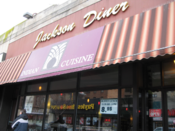
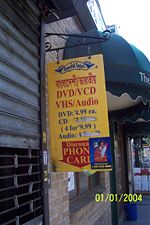
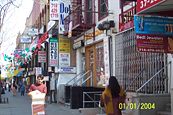

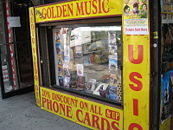
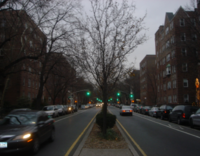
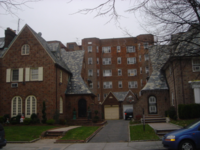

![Garden City Apartments[2]](../../../../images/thumb/f/f7/Community_Greens.lnk.jpg/200px-Community_Greens.lnk.jpg)